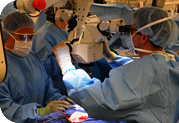It sounds too good to be true, but there might be a bright side to the night sweats, hot flashes and other unpleasantries associated withmenopause. A new study finds that women who experience such symptoms may be at reduced risk of several common forms of breast cancer.
Researchers at the Fred Hutchinson Cancer Research Center in Seattle surveyed 1,437 post-menopausal women, 988 of whom had been previously diagnosed with breast cancer, about perimenopausal and menopausal symptoms including hot flushes (or flashes), night sweats and insomnia, vaginal dryness, irregular or heavy menstrual bleeding, depression and anxiety.
They found that those who had such symptoms had a substantially smaller risk of developing breast cancer, and that the risk decreased as the frequency and severity of the symptoms increased. Specifically, they found 40 percent to 60 percent reduction in the risk of the two most common types of breast cancer, invasive ductal and invasive lobular carcinoma, among women who had experienced those symptoms. They also found that the more severe the hot flashes, the lower the risk. And their findings held even when they accounted for other cancer risk factors such as obesity and use of hormone replacement therapies. Their work, which appears online ahead of print in the February issue of the journal Cancer Epidemiology Biomarkers and Prevention, was funded by the National Cancer Institute.
The researchers suggest that hormones may be the common link, as fluctuations in levels of the hormones estrogen and progesterone are associated with reduced ovarian function leading up to and during menopause. Those hormones are also known to play roles in the development of breast cancer.
Because this is the first study to look at menopause symptoms and breast-cancer risk among post-menopausal women, the authors note, their findings need to be confirmed by other studies. As one who has endured my share of perimenopausal night sweats and hot flashes, I'd say let's get moving on those studies, please.
By Jennifer LaRue Huget | January 27, 2011; 7:00 AM ET at Washington Post


